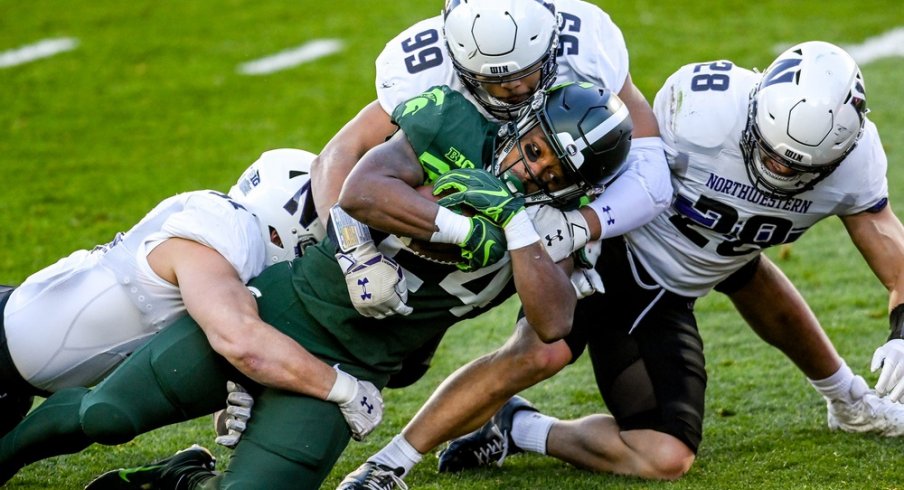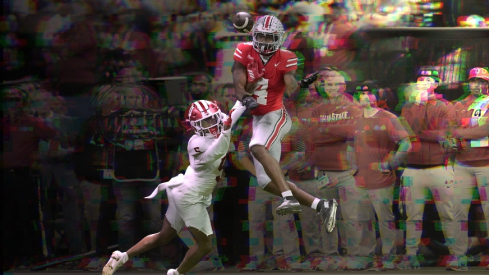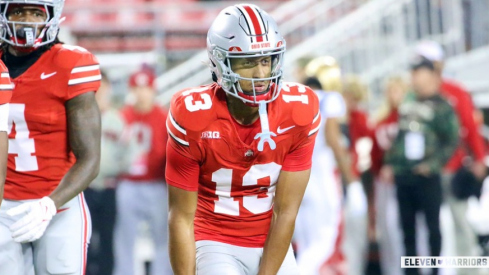Pat Fitzgerald has built a program in his likeness.
While the national perception of his employer and alma mater is that of a wealthy, private school known best for producing writers, business leaders, and scientists, its football team embodies the blue-collar, southside Irish values which shaped him. Though most of Northwestern's alumni base loves that he's thrown out the first pitch at Wrigley Field more than 10 times, the die-hard White Sox fan has built a team that plays more like Mike Singletary than Walter Payton, and will now play for a Big Ten title for the second time in three years.
In 127 football seasons, Northwestern has won 10 games or more just five times. The first was in 1904 and the second came while Fitzgerald was an All-American player in 1995. The other three have come in the last eight seasons in which he transitioned the program from relying on a high-powered spread offense to that of a hardworking, opportunistic defense.
Although that unit may get its personality from the head coach, one of the more overlooked elements of the program's success is the man who actually calls the coverages and fronts.
After earning starting at outside linebacker for Bo Schembechler's 1969 Rose Bowl team, Mike Hankwitz got his first defensive coordinator job 44 years ago at the University of Arizona. From there, the coaching lifer spent time at Purdue, Colorado - where he won a national championship while calling the defense for Bill McCartney's Buffaloes in 1990, Kansas, Texas A&M, Arizona (again), Colorado (again), and Wisconsin before finally settling in with Fitzgerald and the Wildcats in 2008.
Philosophically, Hankwitz's defense is quite similar to the one installed by Jeff Hafley last year in Columbus. The Wildcats play a four-man front with the back-seven keeping their eyes on the ball to contain big plays and force opponents to put together long drives in order to score.
How Hankwitz chooses to bring that plan to life is quite different, however. His defense operates almost exclusively with two-deep safeties, relying on zone-match Cover 4/Quarters coverage to give his defenders a chance to steal a look at the backfield (like a traditional zone defender) before playing routes more like man-coverage.
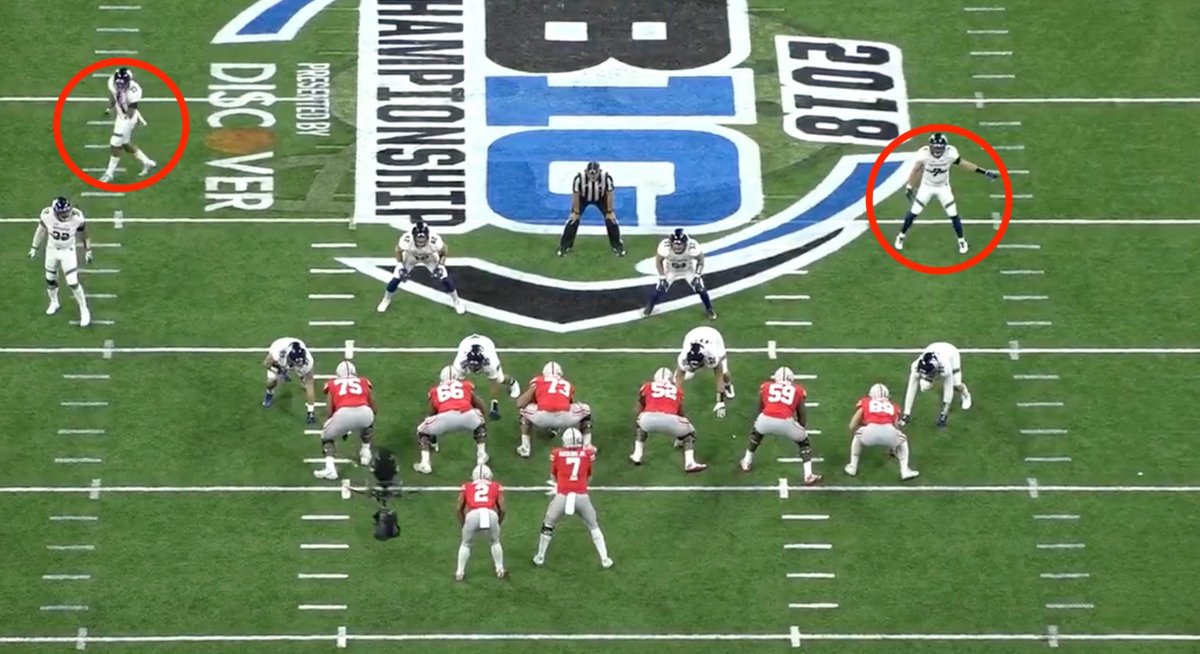
While Michigan State relied on this same approach for years under Mark Dantonio and coordinator Pat Narduzzi, the Wildcats continue to gain an extra defender against the run with this scheme. Though the offense believes they should be able to block everyone in the box, the safety will quickly step down and fill the C-gap if the tight end shows he's run blocking.
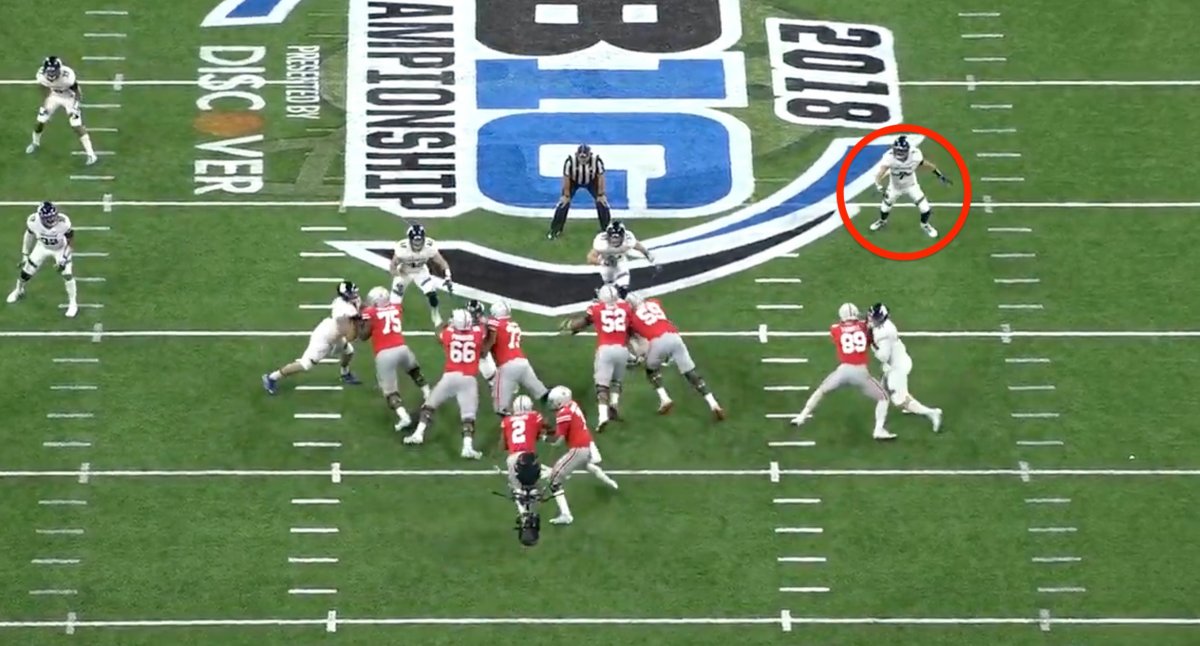
As the Buckeyes saw regularly in the 2018 Big Ten championship game, Hankwitz likes to use his defensive ends to play outside-in, containing the edges and funneling the ball back inside to the disciplined linebacker duo of Paddy Fisher and Blake Gallagher along with the safeties.
In that contest two years ago, Hankwitz held Ohio State to 108 yards rushing with an average of just 2.35 yards-per-carry. Last fall, however, Ryan Day and co. schemed up new ways to create holes in the Northwestern front, leading to a huge night on the ground at Ryan Field.
By flexing out the tight end away from the interior linemen in this 3x1 look, the Wildcats are left with just five defenders in the box. Knowing the Wildcats will play four defenders over the three receivers in their base Cover 4, the help safety will have to come from the opposite side.
Additionally, by calling a true outside zone play in the direction of the trips, J.K. Dobbins had plenty of cutback options with no one there.
His read was an easy one: identify the lone inside linebacker and wait for him to fill a gap. Once the linebacker declared, Dobbins simply cut up through a lane where there was no one to bring him down.
From there, the difference in athleticism became apparent as the former five-star recruit ran through open-field tackles. Such situations are what Hankwitz tries desperately to avoid, as while the veteran Wildcat defense has been well-coached, Fitzgerald's recruiting classes simply can't match the size and speed of those brought in by Day.
The umbrella philosophy on defense is meant to minimize those differences, keeping explosive athletes like Dobbins from breaking big plays like the one seen above. As has been the case in recent years, the Wildcats are once again near the top of the Big Ten in fewest big gains allowed, a trend they will try to extend this Saturday in Indianapolis.
Though Hankwitz's defense did a good job of containing the Buckeye ground game the last time these two teams met in Lucas Oil Stadium, the same can't be said for Ohio State's aerial attack. Dwayne Haskins carved up the Wildcat secondary for 499 yards that night, setting a school record and cementing his place as a first-round draft pick.
A year later, Justin Fields had a similarly easy go of it, completing 18 of 23 attempts for just 194 yards but with four touchdowns. While the two quarterbacks have very different styles, both possess the arm strength to challenge the weakest point of Hankwitz's system.
As he laid out years ago, his secondary can be beaten by throws outside the numbers, as he instructs his corners to play with inside leverage. Essentially, he's betting that most quarterbacks simply cannot complete deep out and comeback routes consistently enough to move the ball downfield.
Yet in each of the last two years, the Buckeye passing games seemed more than capable. Whether off early down play-action...
...by timing up the traditional drop-back passing game on third down...
...or with more complex route combinations like this Flood/Sail concept which targeted the corner...
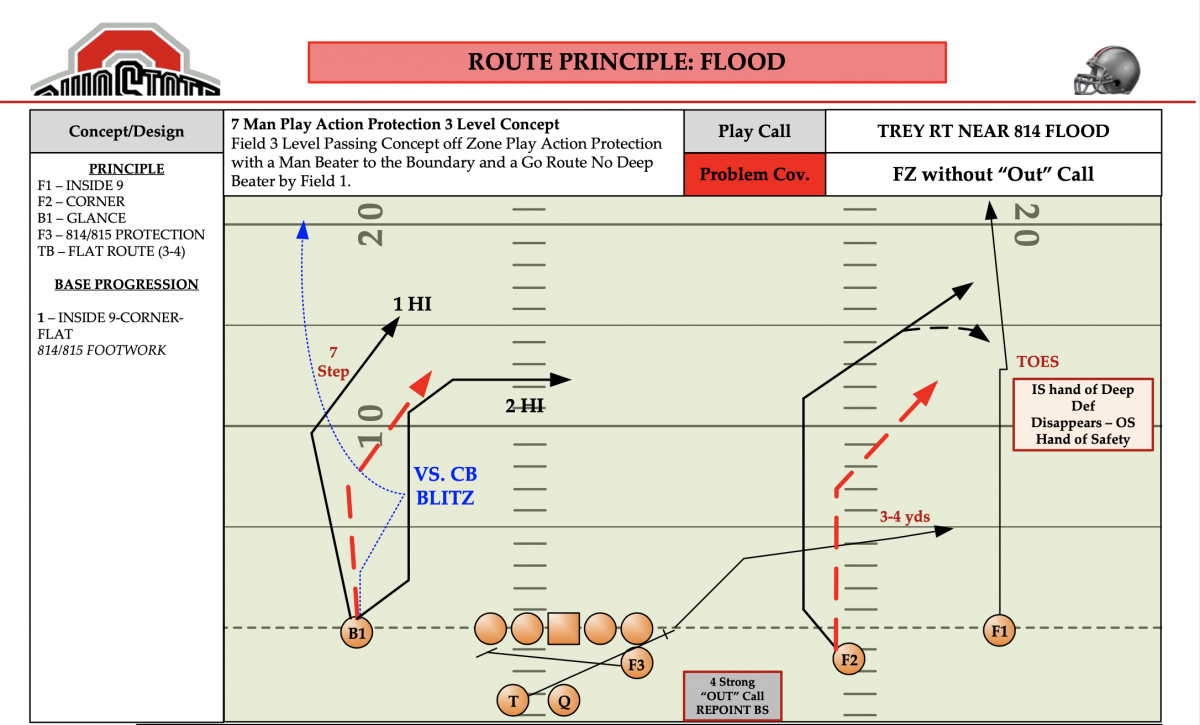
...Ohio State has simply shown an ability to execute which Hankwitz's defense can't match. In the last two matchups between these programs, the Buckeyes have amassed 1,087 yards of offense while scoring 97 points.
That's not to say that the current approach in Evanston is the wrong one. The Wildcats have faced a ranked opponent eight times in the past three seasons, and none has found the same level of success as the Buckeyes.
Instead, it's worth using the Wildcats as a barometer for just how good the OSU offense has been over the past few years. The two best passers in school history, one of the best running backs, and a slew of talented offensive linemen and receivers have made easy work of a unit that rarely makes mistakes, which should be more celebrated than it has been.
While most Ohio State fans measure their team's success strictly against the likes of Clemson and Alabama, it's worth appreciating what it does against a program that has consistently punched above its weight over the past decade. To beat Pat Fitzgerald's defense, an opponent must be operating at full capacity, meaning the Big Ten Championship game is just the kind of test Ohio State may need as it enters the postseason.
